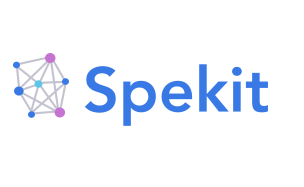ATD Blog
Out of the Stone Age: The Future of Employee Onboarding
Wed Feb 09 2022

When I was young, I loved watching weekend cartoons. A favorite was The Flintstones, a show featuring the adventures of prehistoric everyman, Fred, and his family. Each episode began with Fred ending his workday as a dinosaur-digger operator at the Bedrock quarry. Sliding down a brontosaurus tail, he’d commute home in his clunky, foot-powered car.
This image shaped my early impressions of work, and until recently, it wasn’t so far from reality. People would go to college for specific roles, which they might hold for years, living nearby and commuting to on-site workplaces daily. But today’s work environment is dynamic—demanding innovative ways of learning to ensure a workforce is current and competitive—and the situation has only been exacerbated by the pandemic.
In the US, the workforce is undergoing the Great Resignation, although the term doesn’t reveal the whole picture. According to Job Openings and Labor Turnover Survey (JOLTS) data released by the US Department of Labor in January 2022, a record 4.5 million people quit their jobs, yet 6.7 million people were hired, which means people who leave aren’t necessarily quitting the workforce: They’re finding other employment.
The workforce isn’t so much resigning as migrating in search of new forms of work, including remote and hybrid jobs. This change in the landscape of work has arisen in part because of the pandemic and a desire to stay safe, although—even pre-COVID—tenured positions were becoming rare. But people can’t just step into a new job. They need to be equipped with new skills and processes, which is why we need to move out of the stone age and adopt innovative and flexible approaches to onboarding.
In the past, new employees would go to the office and be onboarded through step-by-step guidance by experienced team members. They might receive a how-to guide and a presentation or two to bring them up to speed with company procedures. But the workplace today looks vastly different than it did ten or even two years ago.
“It's time teams finally realize that the old ‘take this course, memorize it, and apply it when you go back to your day-to-day,’ not only doesn't work scientifically speaking from a retention standpoint, but it’s also a huge drain on resources. Employees have to spend time searching for answers when they can’t recall what was covered and training leaders spend time answering repetitive questions,” says Andrea Rist, L&D expert and head of enablement services at Spekit.
Rist makes a good point: How much time is wasted answering the same questions? How much more productive would employees be if they weren’t digging for resources or materials to support their growth? Successful companies are discovering that the key to impactful onboarding is self-service access to knowledge that guides employees through their workflows, providing them with the answers they need to be successful in their roles independently, without having to wait for a Slack or email response.
We live in a world of instant—conditioned through one-click checkouts, Uber rides, and Google searches. Why should we settle for anything less at work? Learning in our professional lives should be just as easy as it is in our personal lives.
The modern approach is to not make learning a separate experience, but to make it part of an employee’s integrated workflow, thereby reducing disruption and flattening the learning curve because people are using the tools and resources that they already use in their everyday work.
I still like cartoons, but I prefer electric vehicles to the foot-powered Flintmobile. Similarly, today’s leading companies are saying goodbye to presentations and lengthy courses in favor of bite-sized, reinforced content that enables learning to happen where work happens.

